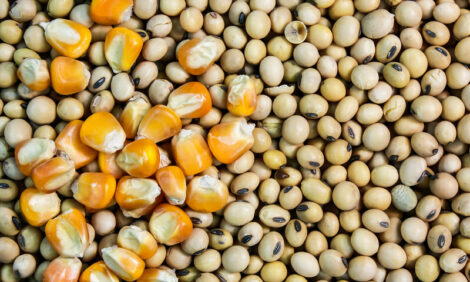



Market Preview: Slaughter Returns to 2005 Levels
US - Weekly U.S. Market Preview w/e 25th August, provided by Steve R. Meyer, Ph.D., Paragon Economics, Inc.

Of course, the big question is what will slaughter rates do this fall. As can be seen by comparing Figures 1 and 2, Canadian slaughter does not exhibit the strong seasonal upturn in the fall that we find in the U.S. data.
It will be difficult for Canada to match last year's slaughter totals this fall given the levels of pig inventories shown in the Statistics Canada report. That report showed 3.1% fewer pigs weighing over 132 lb., 1.2% fewer pigs weighing 44 to 132 lb., and nearly 6% fewer pigs weighing under 44 lb. Those pigs should reach market weight from July 1 through mid-September for the heaviest category, mid-September to early November for the middle weights, and early November through mid-January for the lightest pigs.
The Role of Increased Slaughter Capacity
Conversely, weekly hog slaughter increases by roughly 10% from August to November in the United States. The June Hogs and Pigs Report indicates that fall slaughter this year should be very near the level of last year.
But an important difference this year is higher slaughter capacity. The Triumph Foods plant in St. Joseph, MO, was not a factor in last fall's hog market. Now that same plant is operating one full shift and is in the process of ramping up the second shift. While competitors have known this is coming, they will still have to adjust by finding other supplies.
Cold Storage Stocks Stabilize
This week's Cold Storage Report indicates that frozen meat stocks are becoming more manageable due largely to a continued drawdown of poultry supplies, which were near 1 billion pounds earlier this year. There is still more chicken in freezers now than one year ago (by 4%), but the lower stocks (down 3.6% from last month) are still welcome news. Key to domestic meat prices is the 6.4% reduction in breast meat stocks.
Pork inventories were 8.1% smaller than last year and slightly larger than last month. The most encouraging individual number in the report is ham inventories are 22% smaller than last year -- just as we approach the best time of the year for ham demand and prices. Tighter belly and loin stocks should also be helpful for prices this fall.

Cash, Futures Strengthen Price Outlook
Given recent cash price strength and contract life highs on Chicago Mercantile Exchange (CME) Lean Hogs contracts, this all points to a much better fourth quarter than expected for hog producers. My forecast of fourth quarter national net weighted average price was $57-$60/cwt carcass weight. Futures suggest that prices could be $5 to $7 higher than that. It is developing into quite a remarkable year.
Positive Price Streak Continues
Iowa State University agricultural economists estimate that Iowa farrow-to-finish operations made $25.87/head in July. That makes 30 consecutive profitable months on this long-running series of cost and returns estimates. This streak is still second to the 33 months of profits from December 1976 to August 1979. Given current futures prices and what now appears to be good corn and soybean crops, it appears certain that a new record will be set. Furthermore, it may be shattered. Should the series get through this fall, it may run most of the way through 2007.







